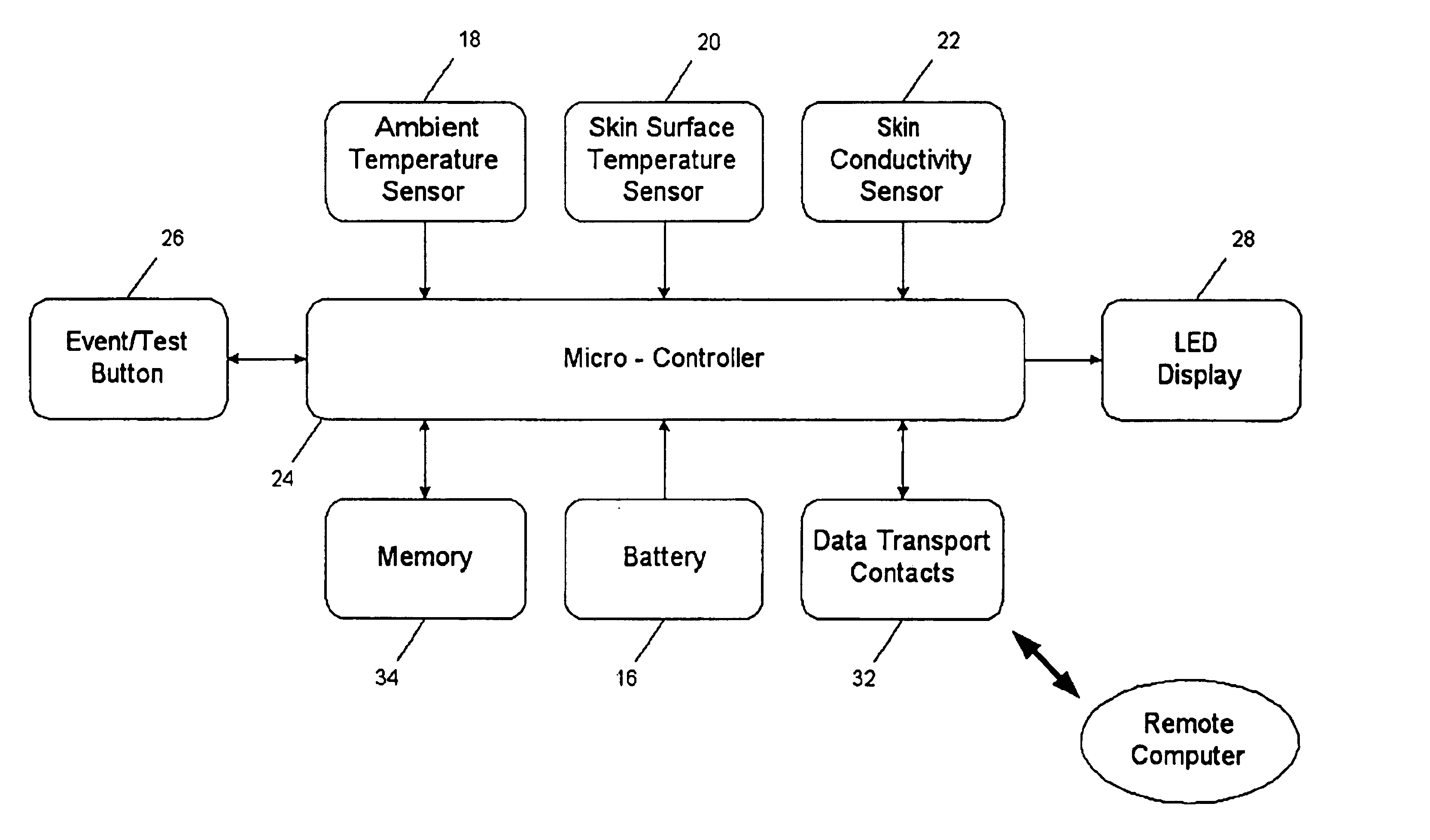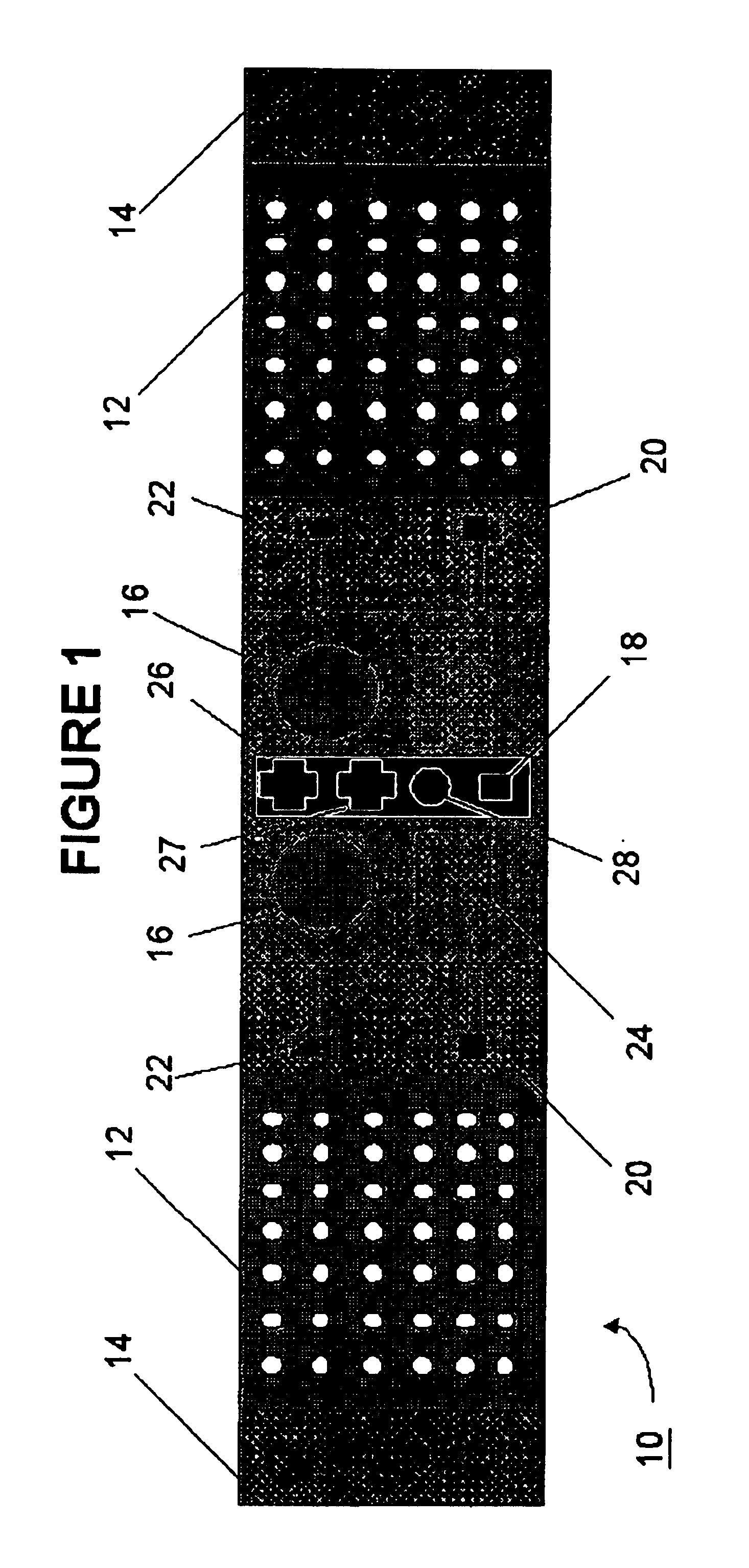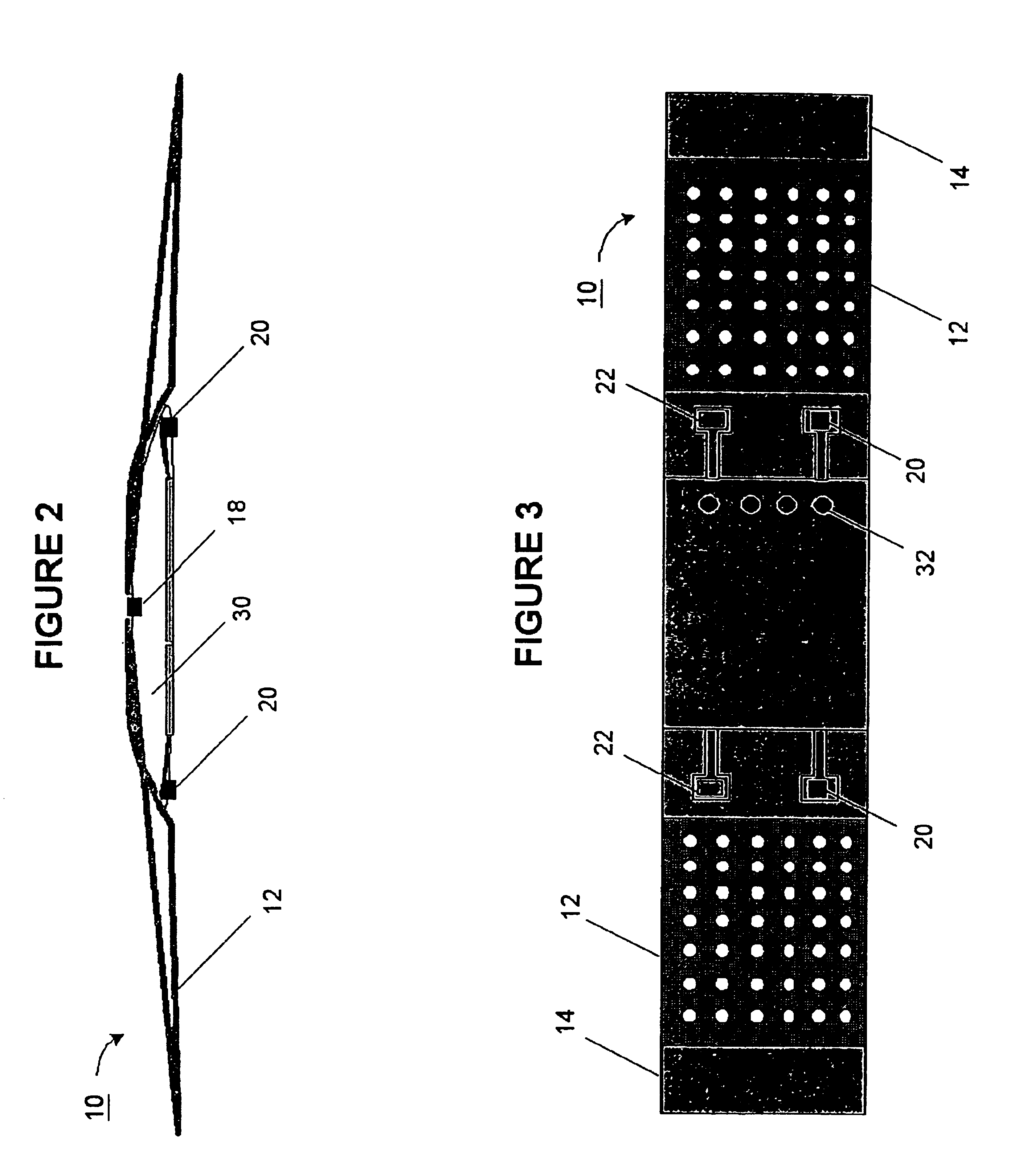Ambulatory surface skin temperature monitor
a skin temperature monitor and ambulatory surface technology, applied in the field of ambulatory surface skin temperature monitors, can solve the problems of limiting blood flow, numbness, and numbness of patients' fingers and toes, and reducing the effect so as to minimize the impact of digital blood flow and surface temperatur
- Summary
- Abstract
- Description
- Claims
- Application Information
AI Technical Summary
Benefits of technology
Problems solved by technology
Method used
Image
Examples
Embodiment Construction
The following figures use like reference numbers to represent like elements throughout the description.
FIGS. 1-3 illustrate top, side, and bottom views of the ambulatory monitor respectively. The ambulatory monitor 10 is generally shaped like a typical band-aid bandage. The basic structure is comprised of an electronics section surrounded by a perforated flexible band 12 that includes a replaceable adhesive backing 14 on each end. The ambulatory monitor 10 is designed to be wrapped around a patient's finger and adhesively secured in place. The electronics portion of the ambulatory monitor 10 is comprised of a small battery 16, an ambient temperature sensor 18, one or more surface skin temperature sensors 20 (thermistors), one or more skin conductivity sensors 22, a micro-controller 24, an event / test button 26, a power readout button 27, and an LED 28 for providing visual feedback to a patient. The micro-controller 24 further includes a resident non-volatile memory device (not shown)...
PUM
| Property | Measurement | Unit |
|---|---|---|
| temperature | aaaaa | aaaaa |
| flexible | aaaaa | aaaaa |
| skin conductivity | aaaaa | aaaaa |
Abstract
Description
Claims
Application Information
 Login to View More
Login to View More - R&D
- Intellectual Property
- Life Sciences
- Materials
- Tech Scout
- Unparalleled Data Quality
- Higher Quality Content
- 60% Fewer Hallucinations
Browse by: Latest US Patents, China's latest patents, Technical Efficacy Thesaurus, Application Domain, Technology Topic, Popular Technical Reports.
© 2025 PatSnap. All rights reserved.Legal|Privacy policy|Modern Slavery Act Transparency Statement|Sitemap|About US| Contact US: help@patsnap.com



